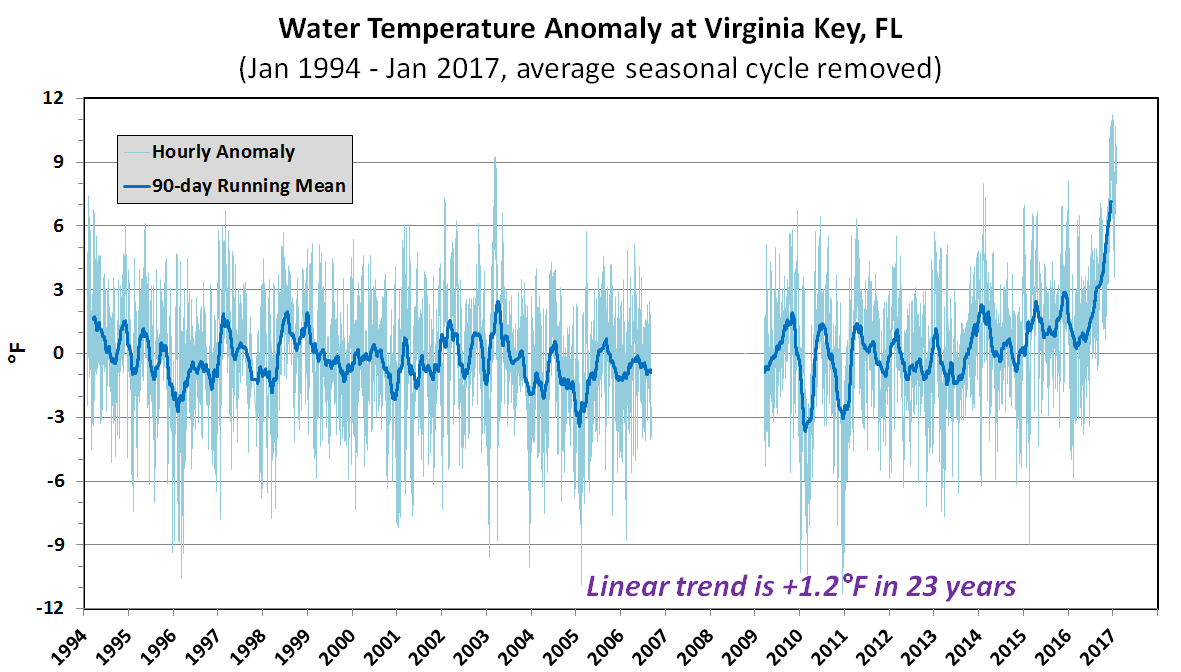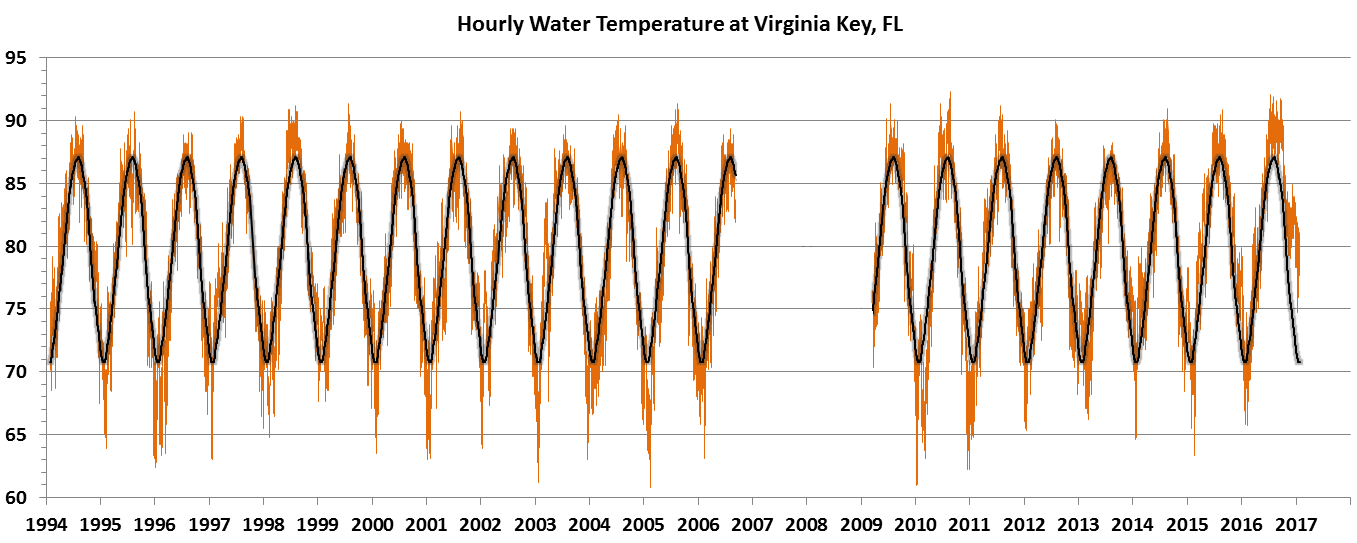
While meteorologists are studying the unusual warm weather in the eastern United States this winter, meteorologists and oceanographers are also studying unusually warm water temperatures too. One such place is Biscayne Bay near Miami, Florida; not only is it seeing record warmth for this time of year, but the new records being set are nearly double the previous record.
Helping decipher clues to the unusual warmth are experts at the Rosenstiel School of Marine and Atmospheric Research located on Virginia Key. Located just off the Rickenbacker Causeway, the school is along the eastern side of the Bay with only Key Biscayne standing between it and the Atlantic Ocean. Along with providing spectacular views of all three sections of the Bay, the Rosenstiel School is also one of the world’s premier marine and atmospheric research institutions. Affiliated with the University of Miami, the school uses cutting-edge research in order to understand and predict the Earth’s geological, oceanic, and atmospheric systems.
To understand temperatures in Biscayne Bay, the school has a water temperature sensor there that sits about 12 feet below the Bay’s surface.
Brian McNoldy, a senior research assistant with the Atmospheric Research Department, has been taking casual looks at the temperature data over the past few months.

“Typically this is the coolest time of year and the temperature is still running 8 or 9 degrees above the average,” McNoldy said. “It’s not the warmest it has ever been, just the warmest for this time of year –in fact it is more than double the previous record.”
The charts provided by the school show that the Bay typically sees the coolest temperatures, about 70 degrees, in early February. The record value McNoldy refers to is the previous 90 day average which helps to eliminate daily fluctuations. While the data sample is limited and only goes back to 1994, the incredible warmth seen in the Bay now is having people take notice.



McNoldy says there is not a single reason that the Bay is this warm, but there have been a few events that could be the cause. “This past winter, if you average all the air temperatures, it is the warmest on record for the Miami area. This doesn’t necessarily mean that the water should be warm however. We have had past warm seasons that didn’t lead to warmer water temperatures.”
In addition to the record warmth, there has yet to be a significant cold front to impact south Florida. The temperature has yet to drop below 50 degrees at Miami International Airport, a feat that has only happened three other times on record. Along with no significant cold fronts this season, there have been very few days with a strong off shore wind. Off-shore winds can transport the warm surface water away from the Bay and allow colder water to upwell to the surface; without such a wind present, cold water never has the opportunity to upwell to the surface.
McNoldy said the school’s sensor in Biscayne Bay isn’t the only site reporting above normal water temperatures. However, while sites farther north have also been reporting water temperatures that were above average, the scale of how far above average they are isn’t the same as the readings seen in Biscayne Bay.
Without a clear, definitive reason for the warm, McNoldy and other researches will continue to monitor the situation and determine it it will impact the future water temperatures. McNoldy said he’ll continue to monitor water temperatures to see if the current record trend holds through the spring and summer. If it did, it would put the Bay near 100 degrees. “That is something I have never seen and hope to not see this year.”
Many associate warm ocean temperatures with increased tropical cyclone activity. However, the National Hurricane Center told us in a statement, “Even though warmer weather may be a concern for tropical development, the National Hurricane Center is not concerned on this warm reading due to the fact that it is on such a small scale compared to the Atlantic Basin and Caribbean Sea. ”